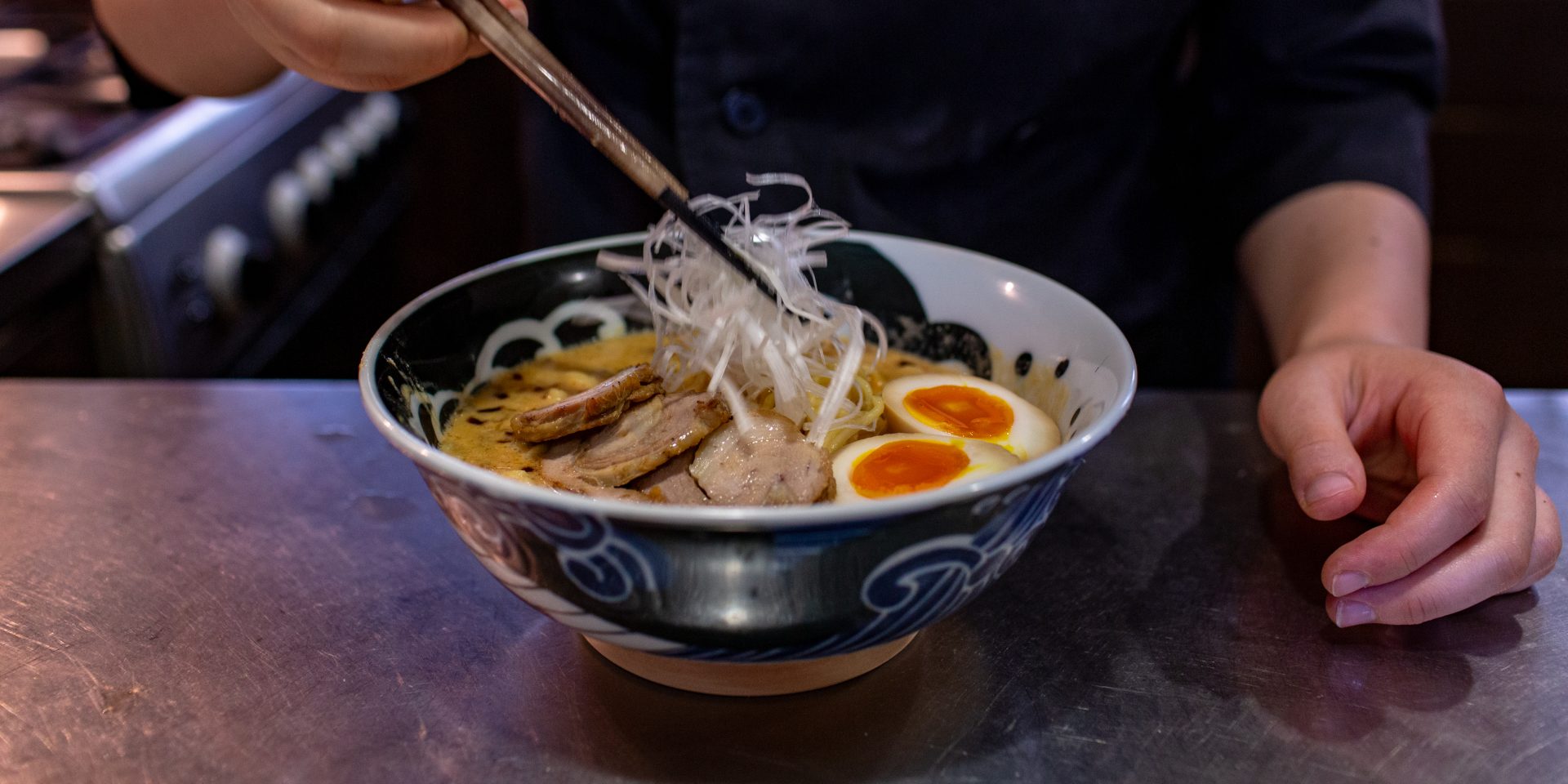
Who
Kiara Koizumi
Kiara can’t remember exactly when her love for cooking began, but she has always felt at home in the kitchen. One memory stands out: when she was about four years old, her family was snowed in and running low on food. Her mum Chriss brought out a children’s cookbook that her aunty had given her for Christmas. With her love of playing with clay and playdough, she decided to bake bread. She had such a fun time making it that she never stopped. Over the years, baking and cooking have connected her with people from all over the world. She’s grateful for the journey it has taken her on, but what she cherishes most is cooking for family and friends. Seeing them enjoy the food she makes brings her immense happiness.
Now a popular teen chef with 100K Instagram followers, Kiara has inspired many budding young chefs to try cooking at home. It’s particularly encouraging to see the younger generation embrace the skills of home cooking. In an age where food convenience is just an order away via online platforms, cooking at home with fresh ingredients, especially from scratch, teaches children patience, perseverance, and creativity in the kitchen while also improving their math and science skills through hands-on experiences. It fosters responsibility, independence, and healthy eating habits, and helps them develop an appreciation for reducing waste and practicing sustainability. Therefore, when it came to featuring a junior chef for my book Foodwise – a kid’s guide to fighting food waste and saving the world, I knew Kiara was the right fit!
Having a supportive mum like Chriss has truly shaped Kiara into the chef she is today. From a very young age, her mum included her in kitchen activities, fostering Kiara’s passion for cooking. With grandmothers from both Japanese and New Zealand backgrounds, Kiara spent a lot of time learning valuable cooking tips from them. I especially love the reels of Kiara cooking alongside her grandmothers, showcasing her deep connection to both culinary traditions. Kiara has been fortunate to explore these rich culinary worlds from such a young age. Living in Japan, particularly in Yamanashi prefecture, which is known for its abundance of fresh fruit and ingredients due to its unique geography, Kiara has had the opportunity to work with some of the finest local produce. A few years ago, she also had the incredible chance to go behind the scenes and make fava bean tobanjan with the team at INUA, led by chef Thomas Frebel, a former NOMA chef.
During my recent visit to Japan, I finally had the opportunity to meet Kiara and her family in person. For Who Does the Dishes, Kiara prepared her special ramen dish, featuring the creamiest, most delicious, and healthy slurp of broth.
“I have always loved ramen noodles and really wanted to try making it from scratch for the longest time. I tweaked the recipe adding ingredients I thought would give it a really rich and creamy texture. I like surprising people when I tell them that the secret ingredients are peanut butter and cashew nuts!”
Kiara’s Food waste Tip
We try to use all parts of the vegetables, like making crispy pumpkin skin chips or cutting up the stalks of broccoli and adding it to curries and soups. Otherwise we compost our scraps.
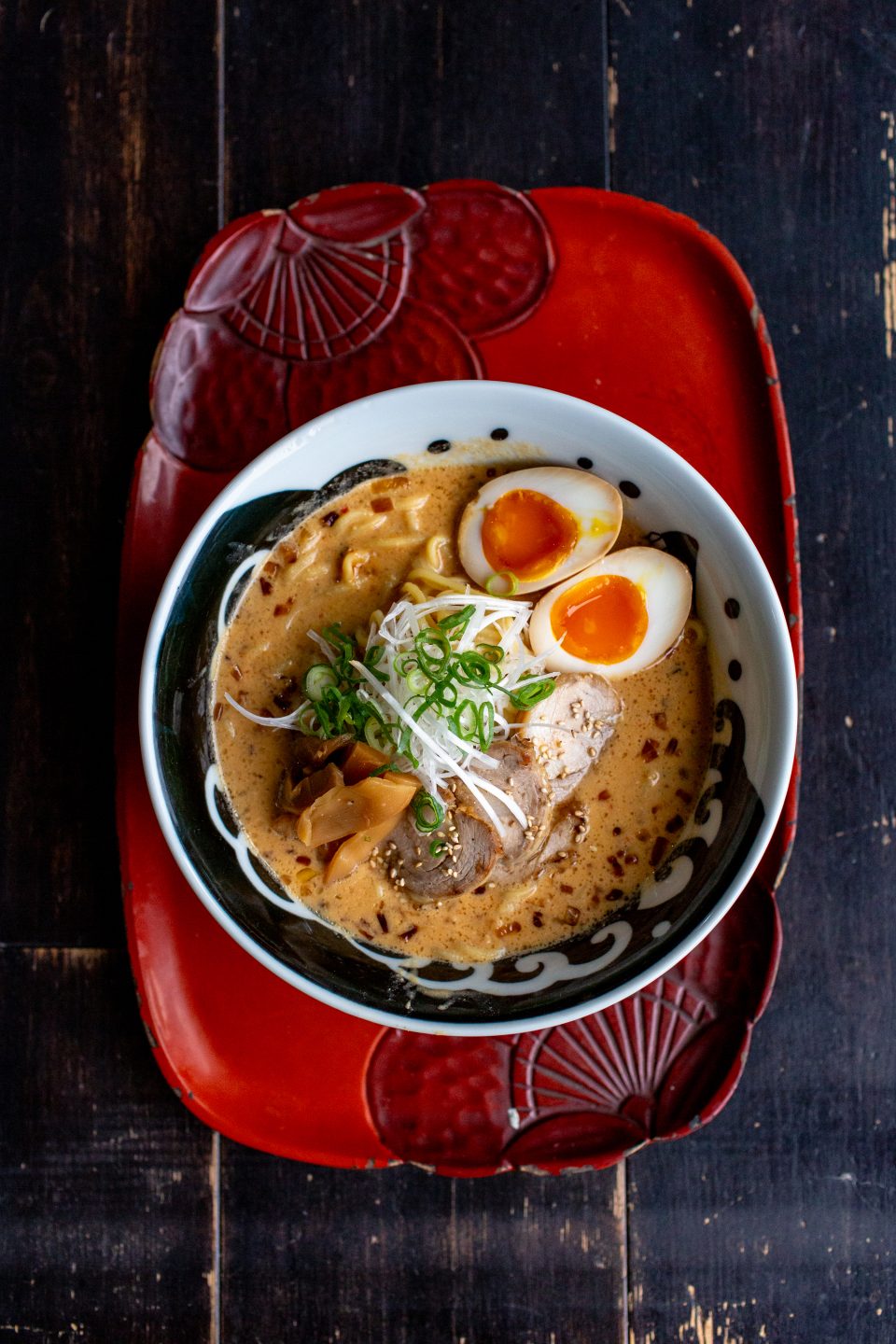
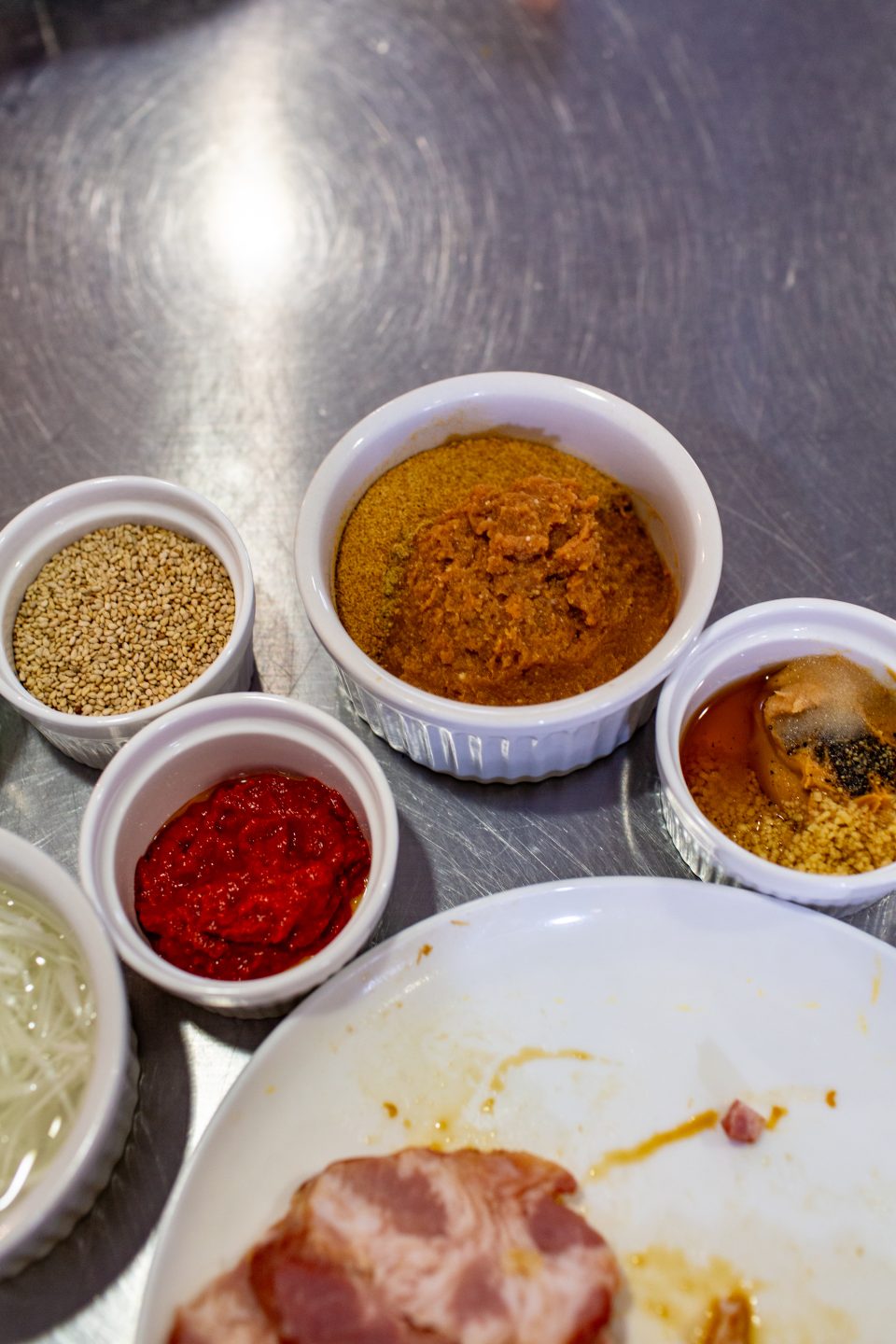
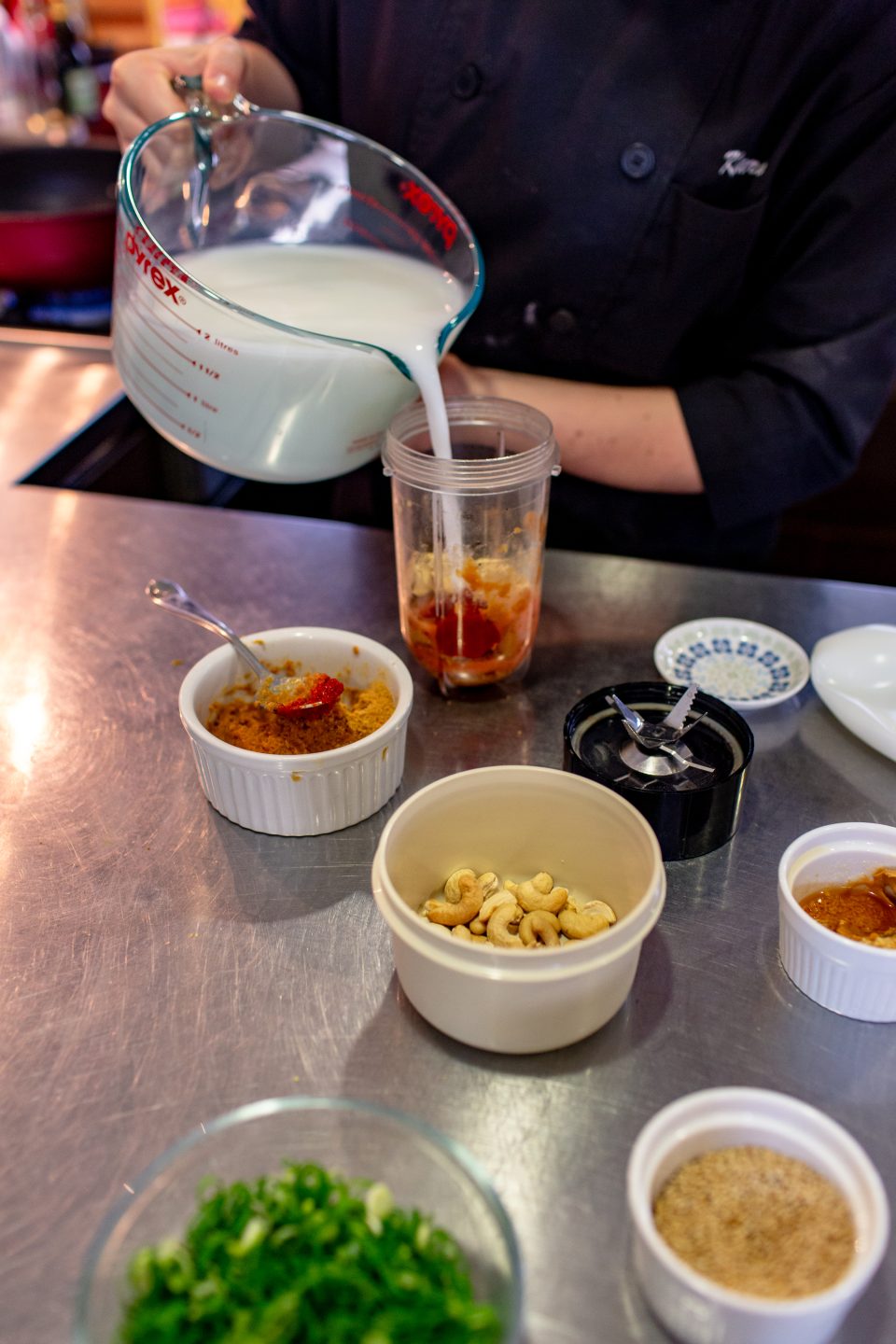
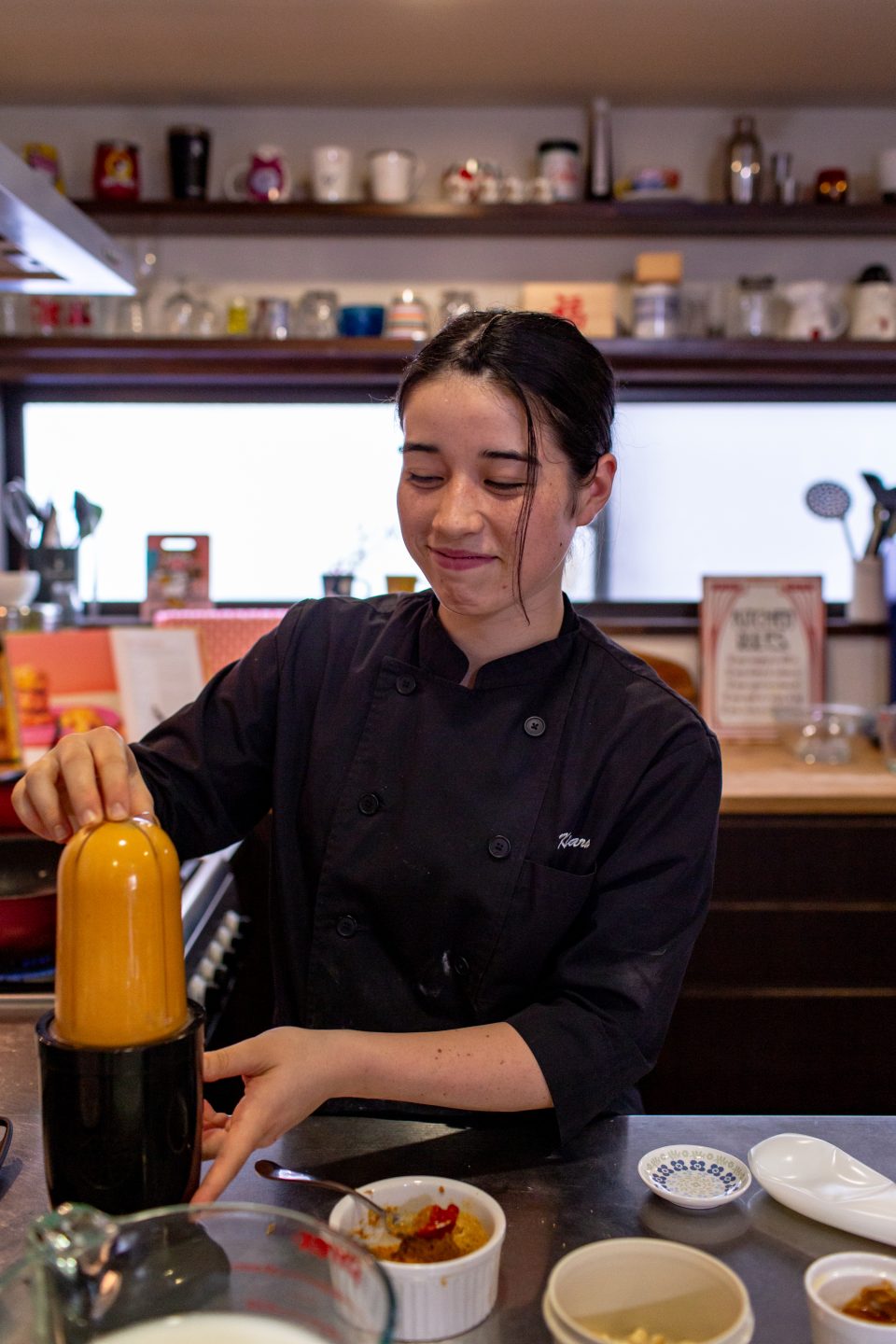
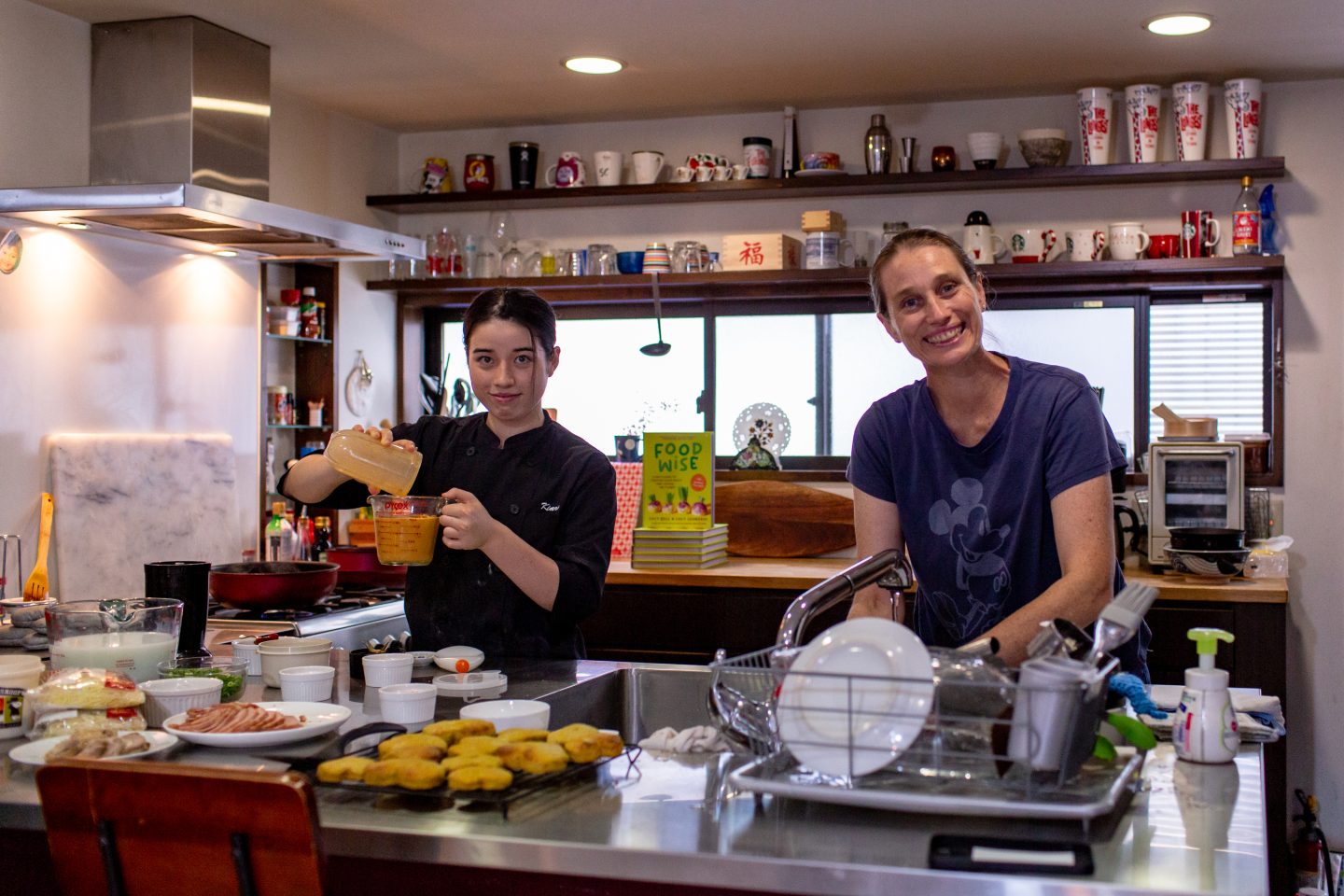
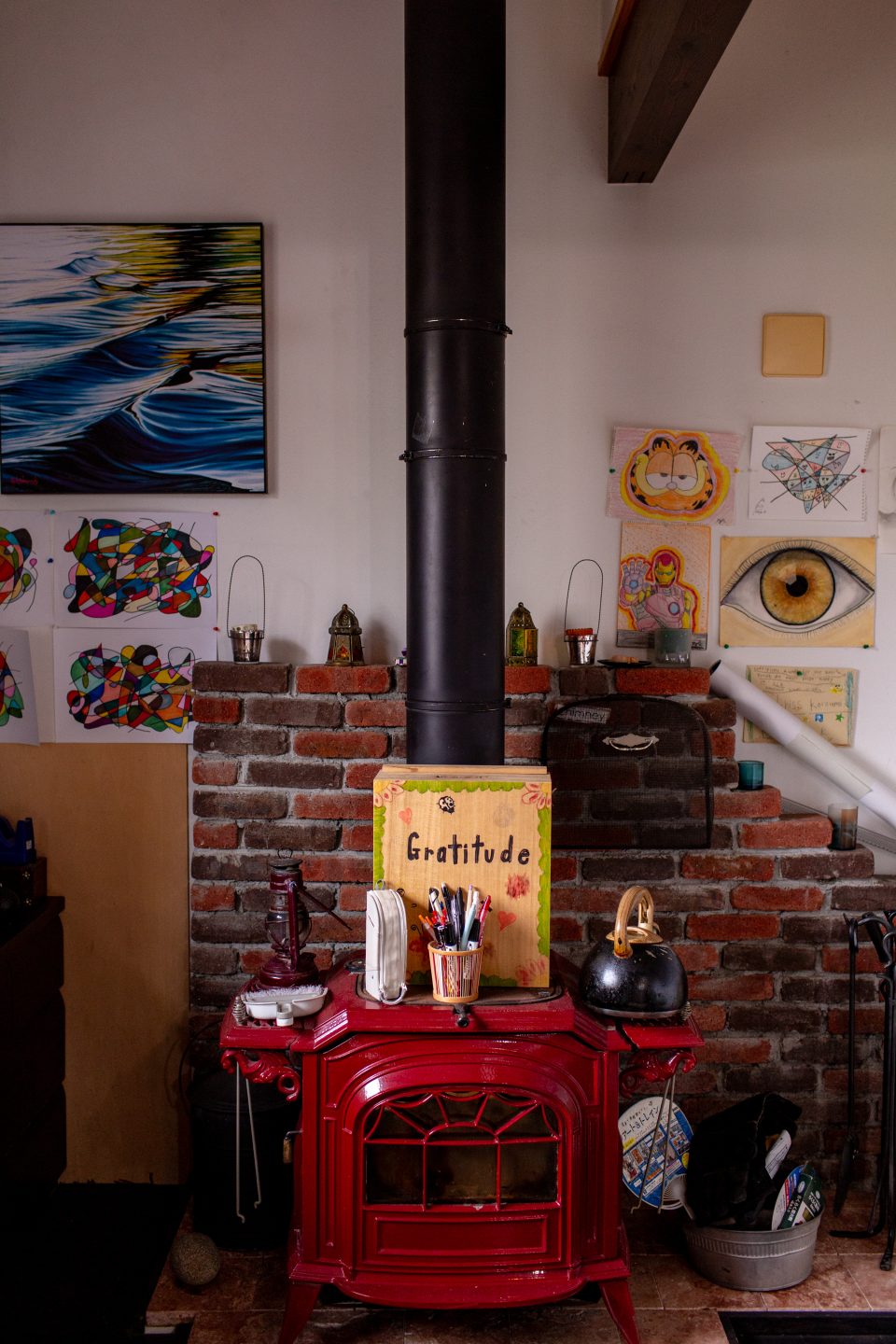
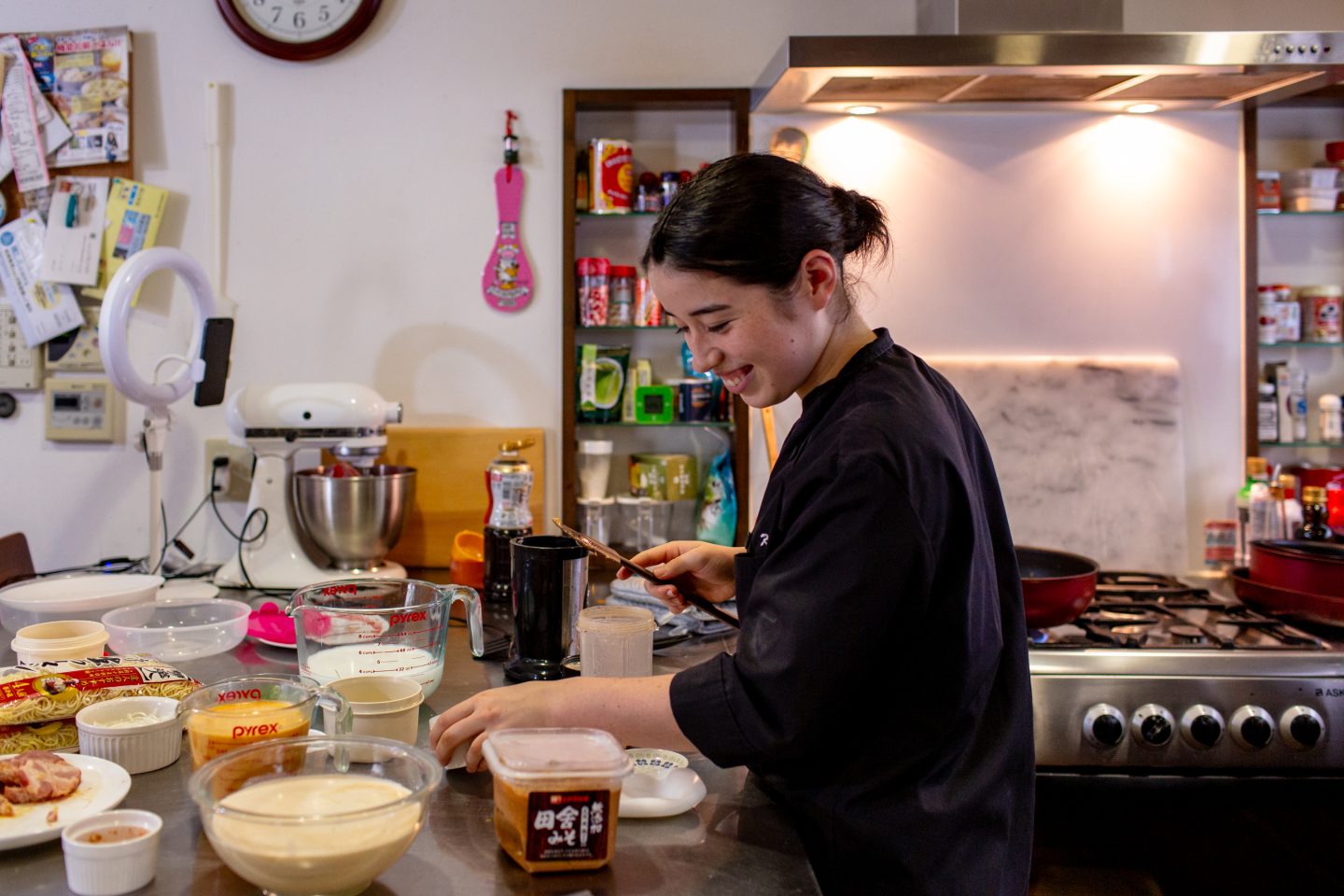
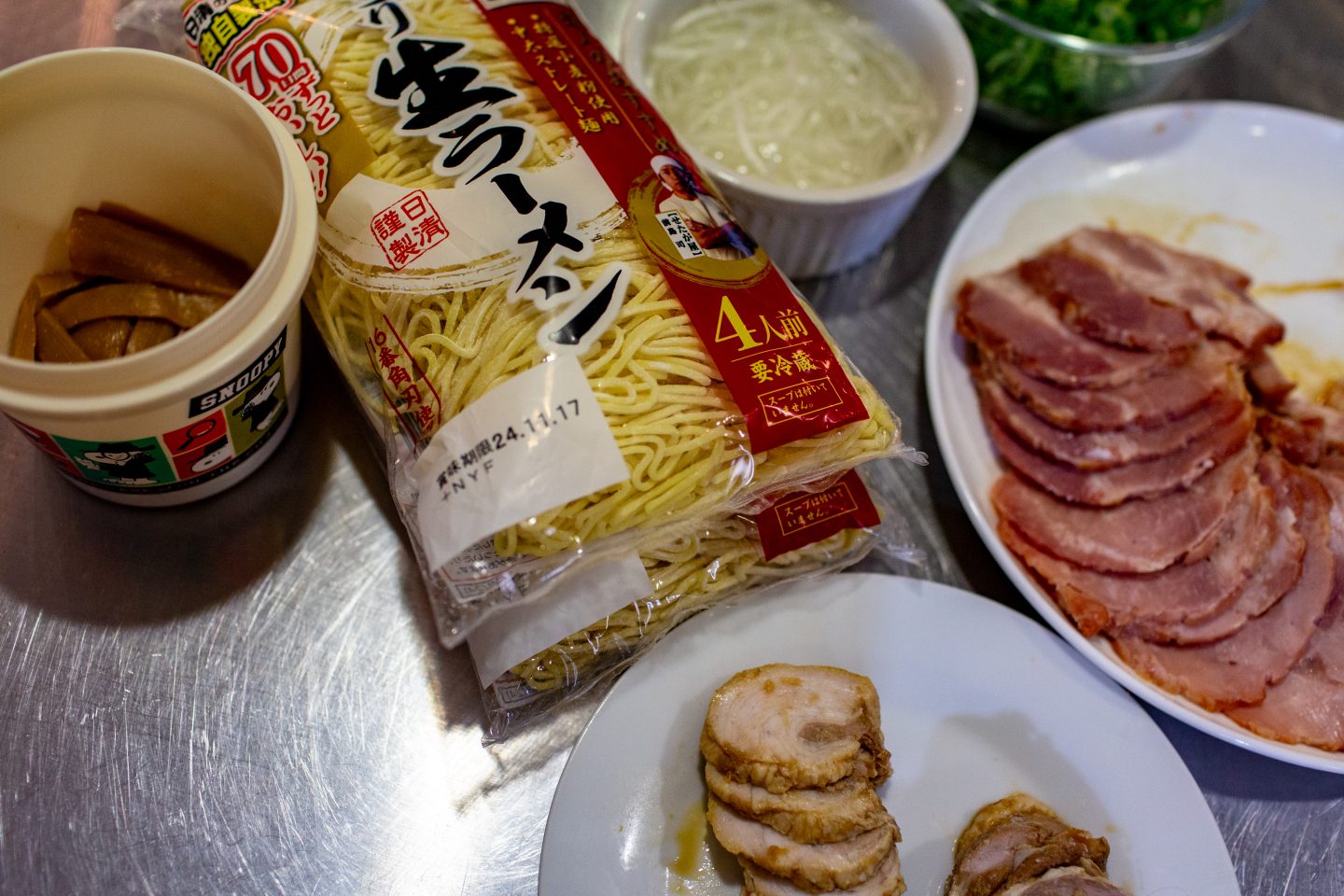
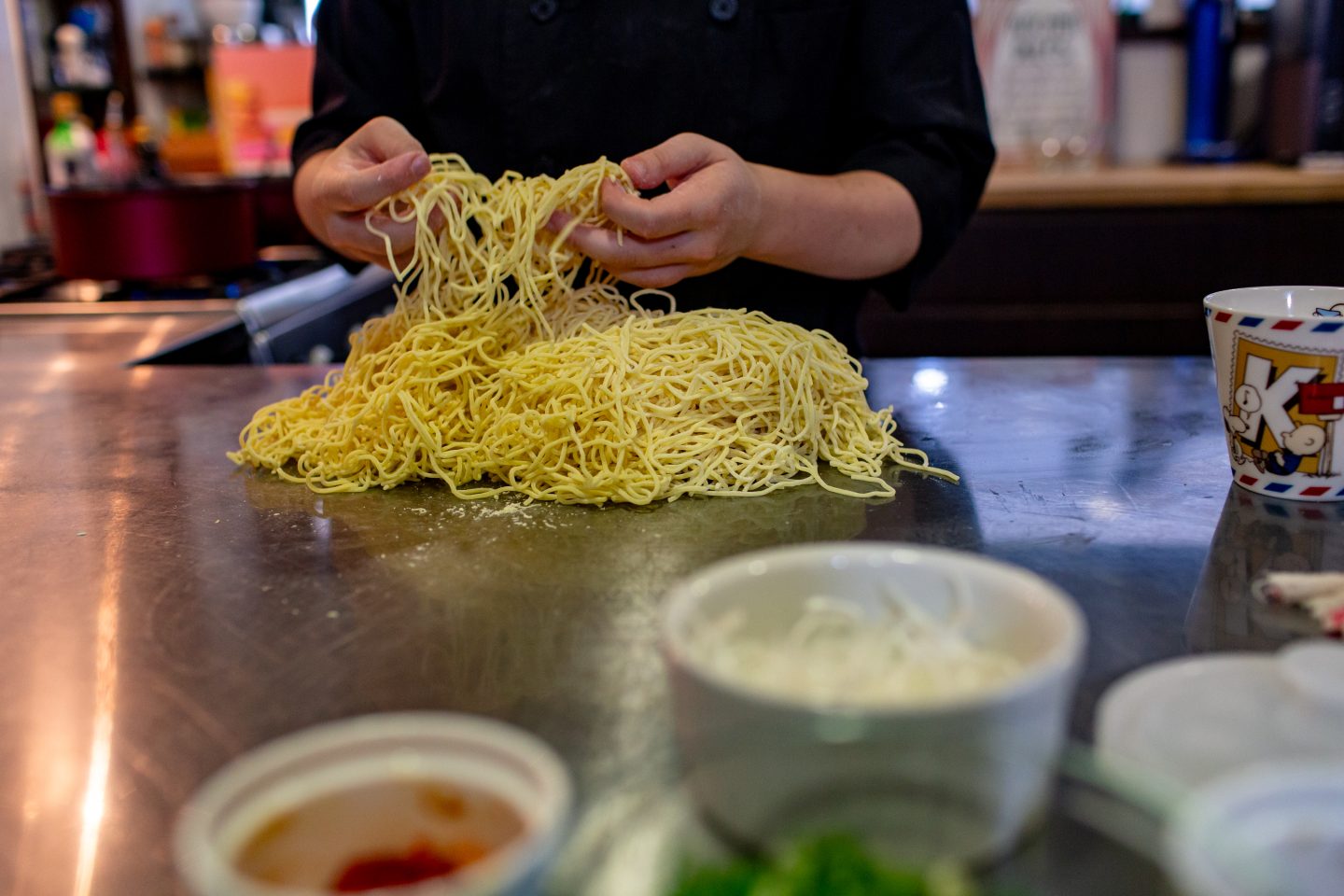
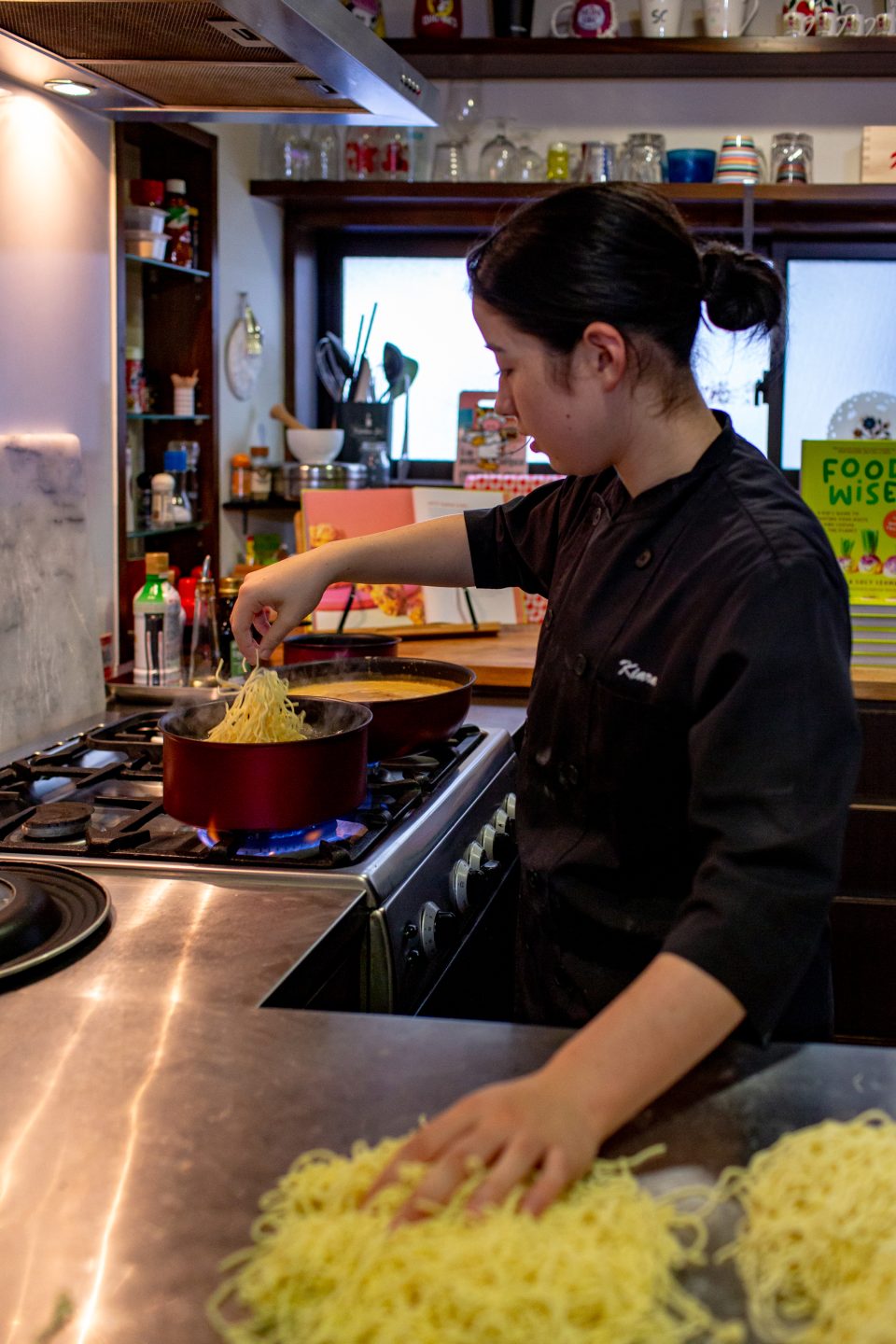
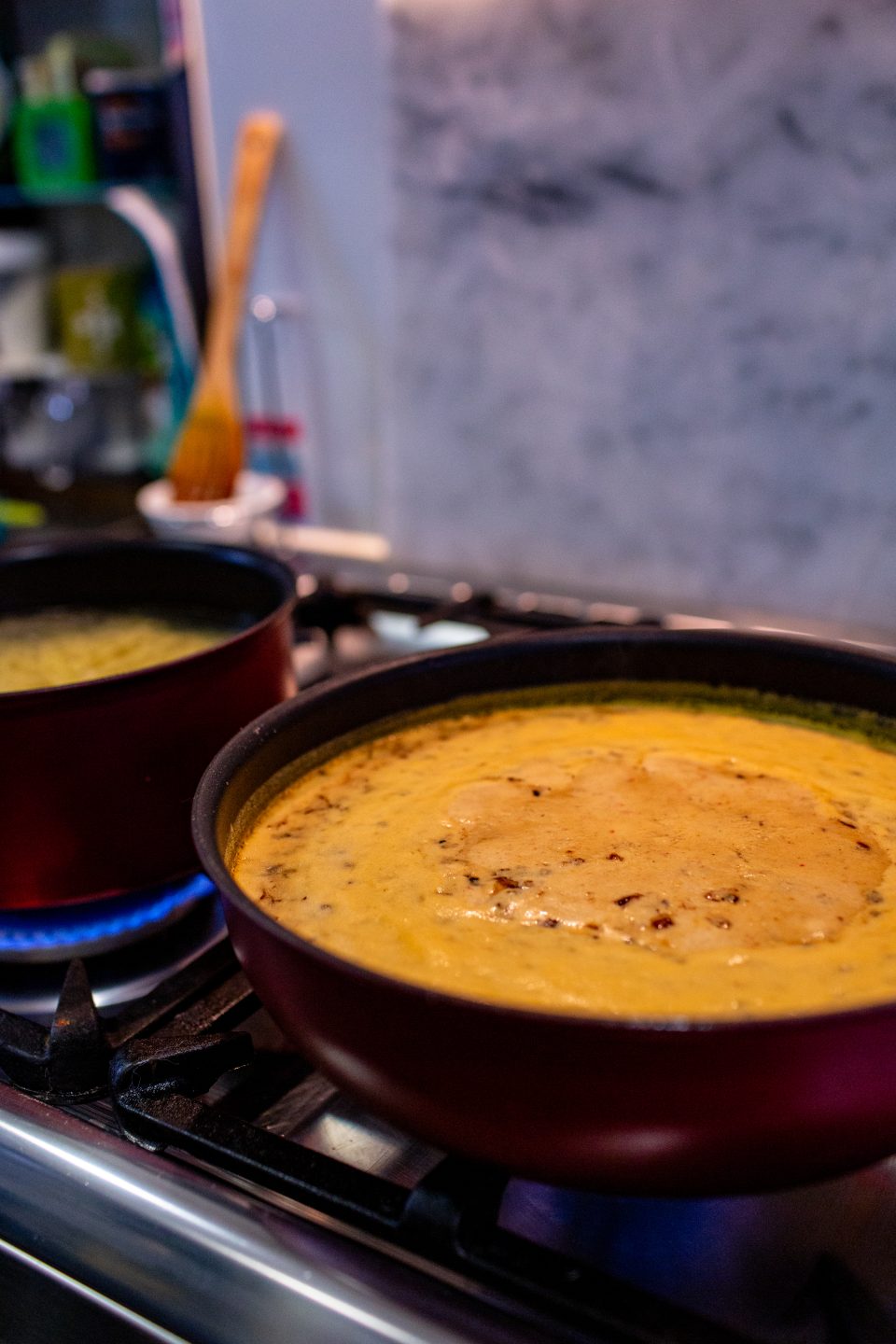
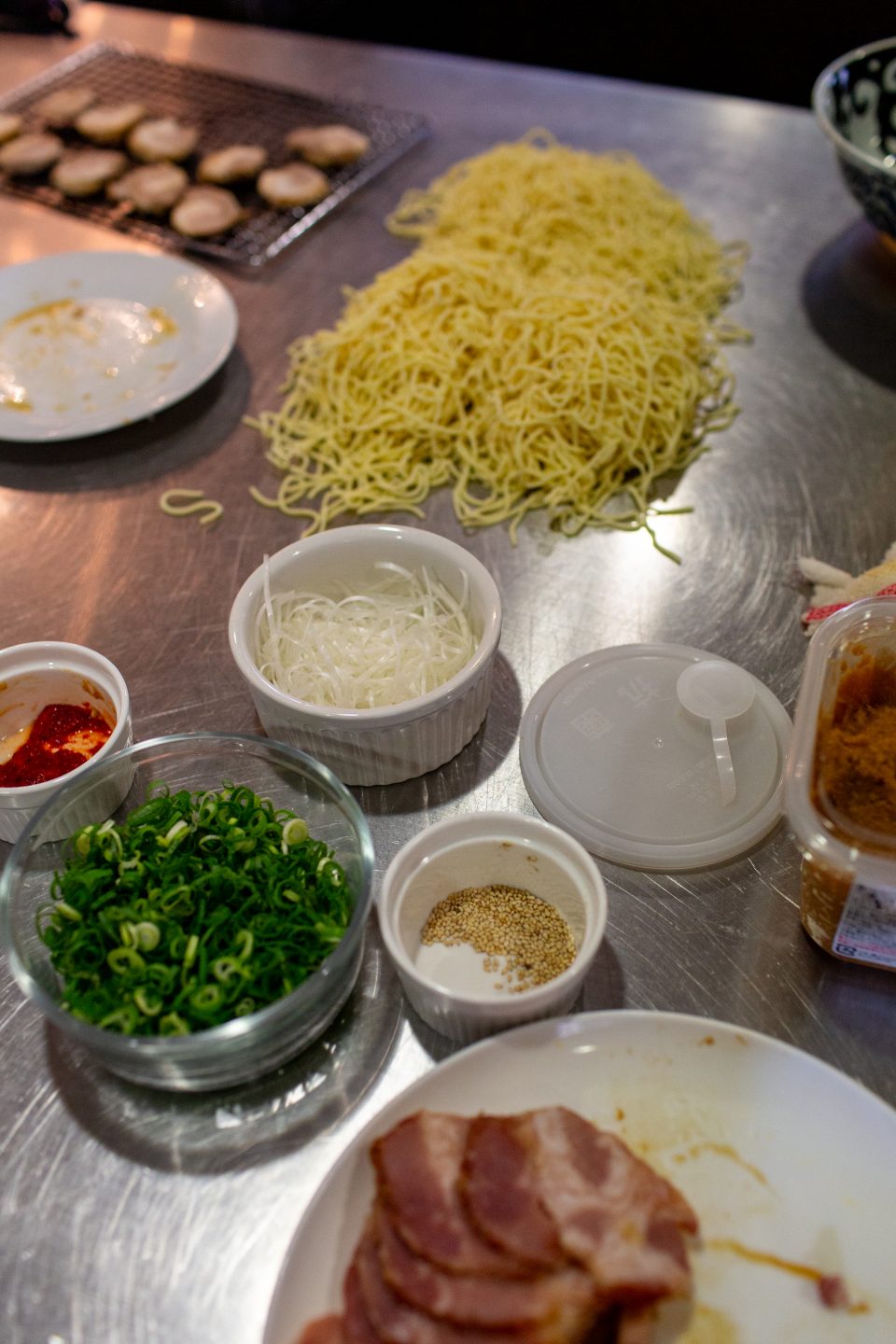
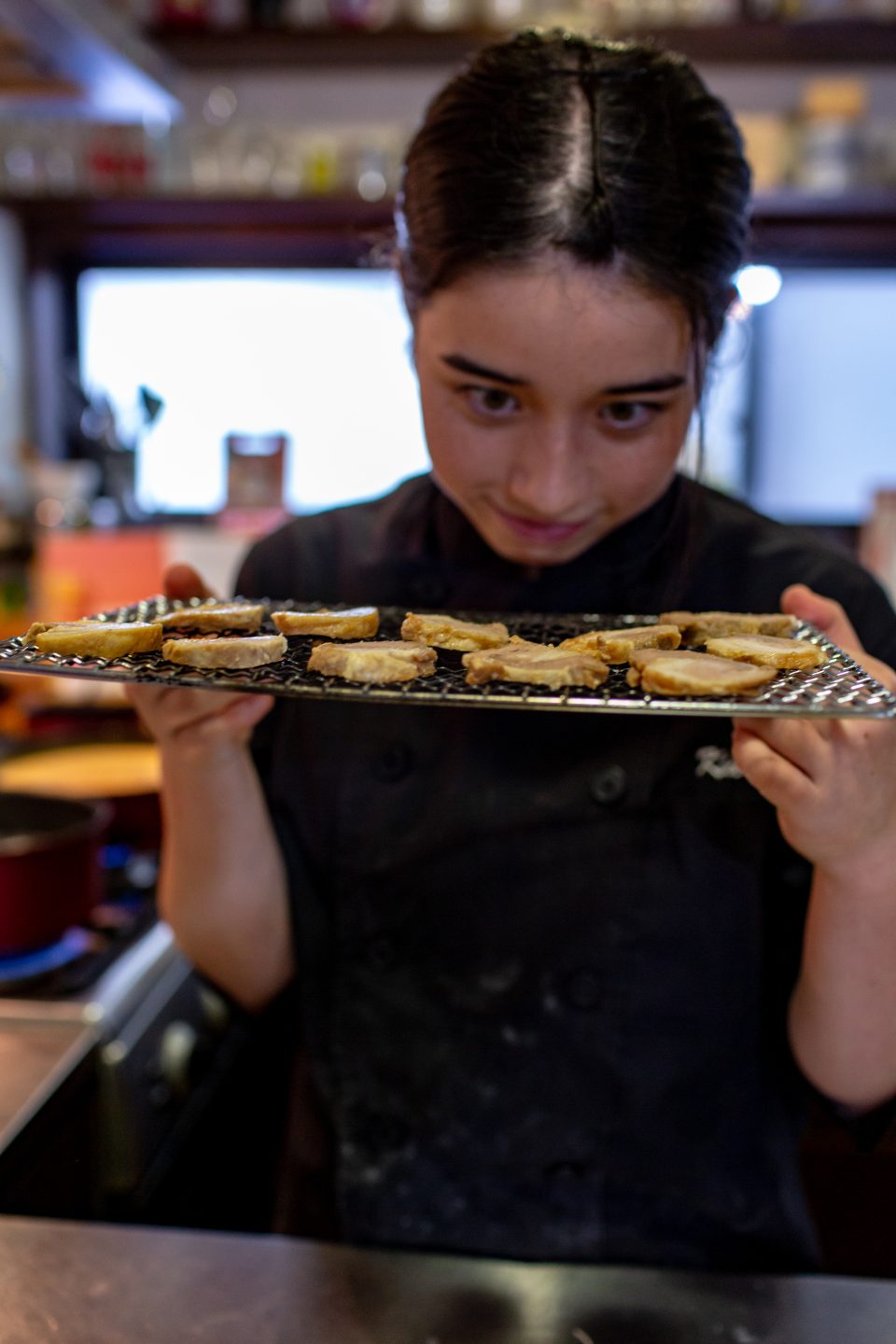
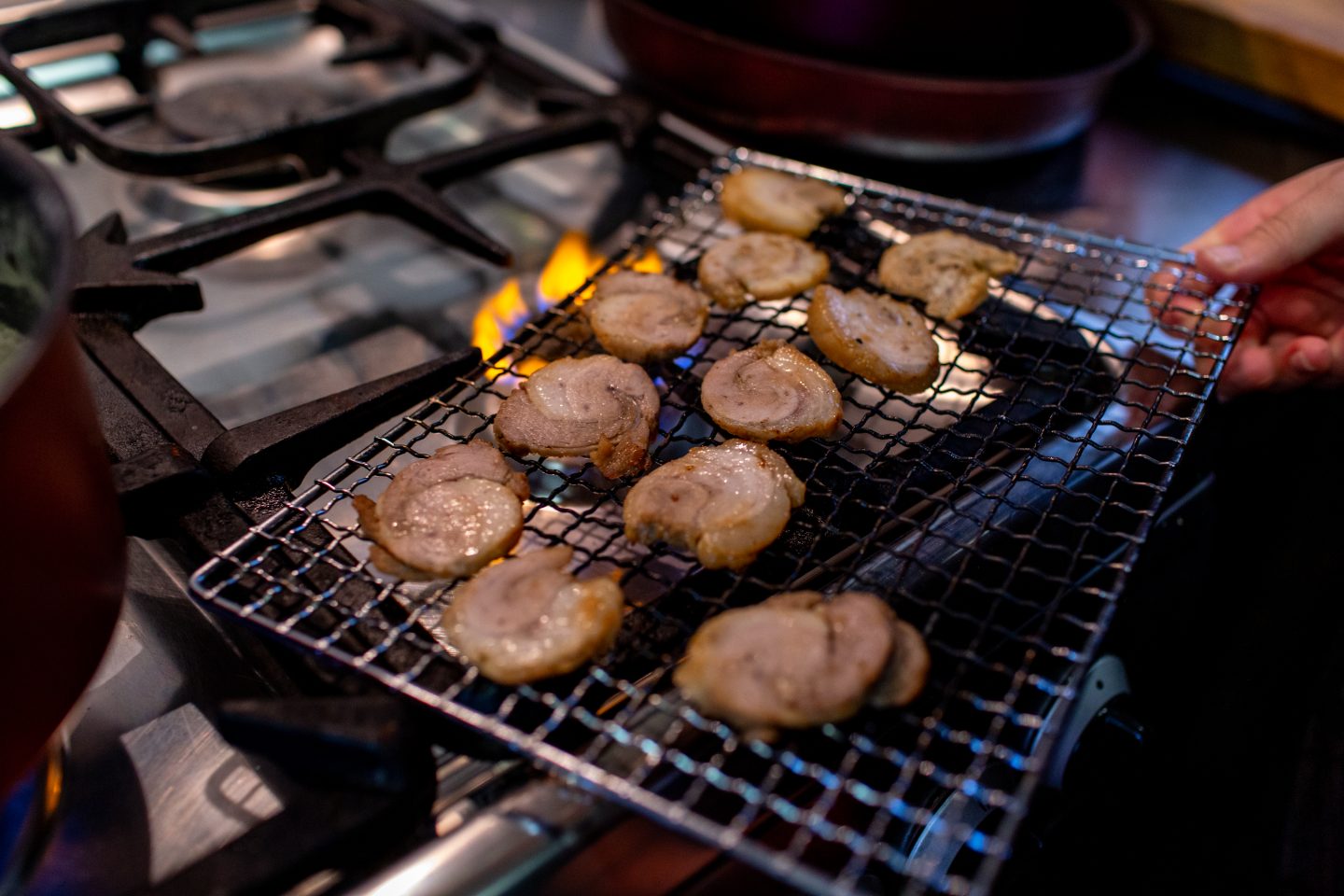
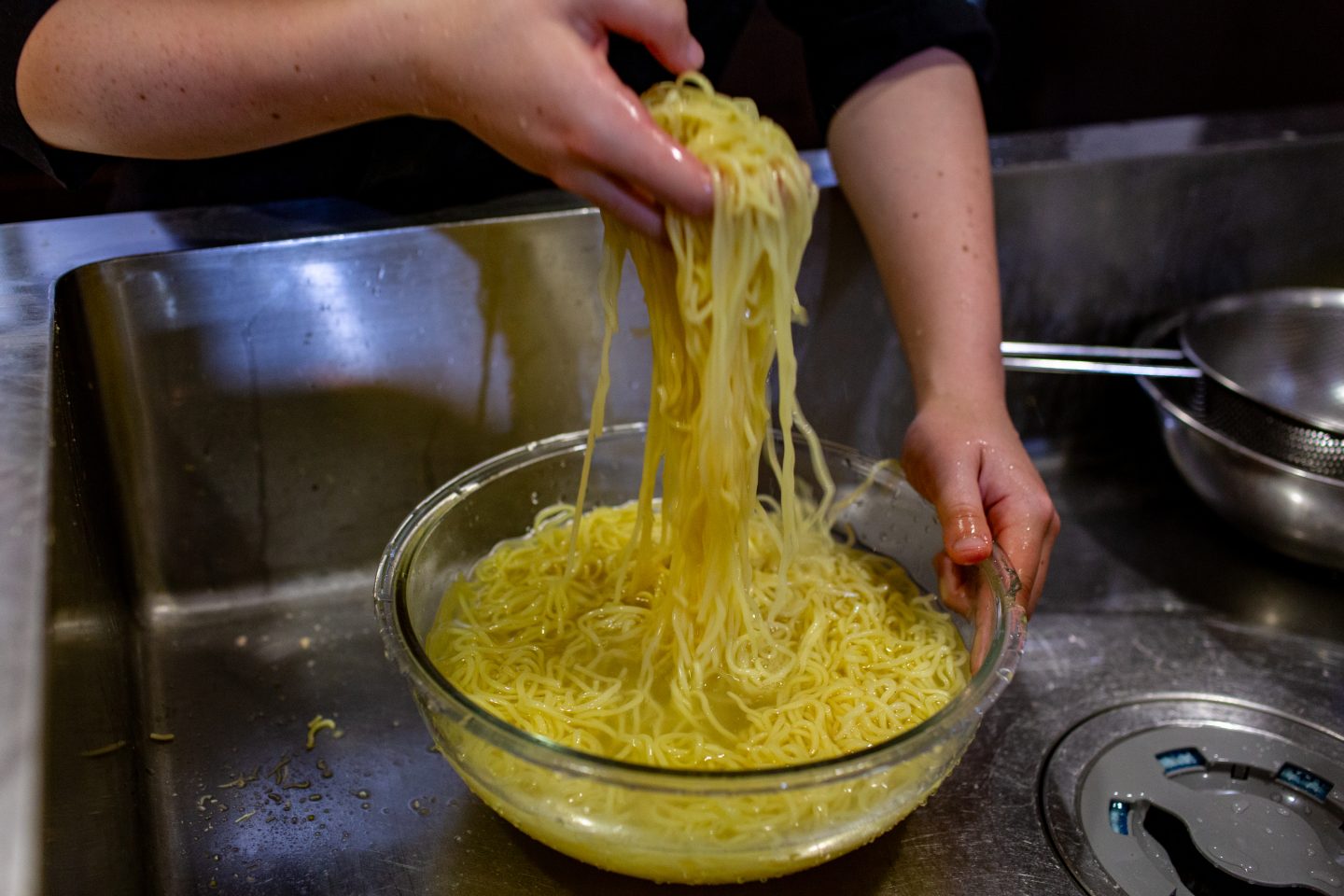
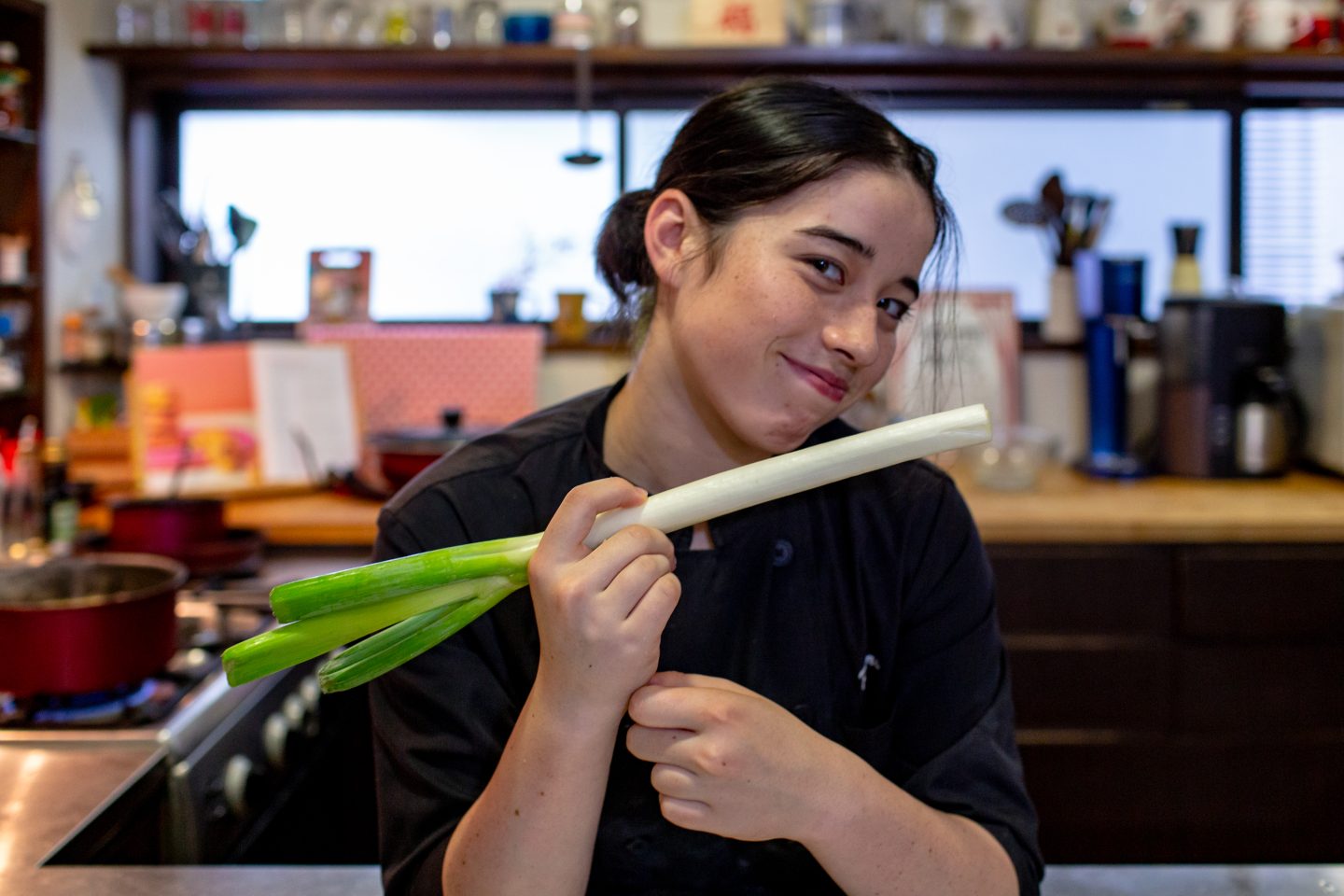
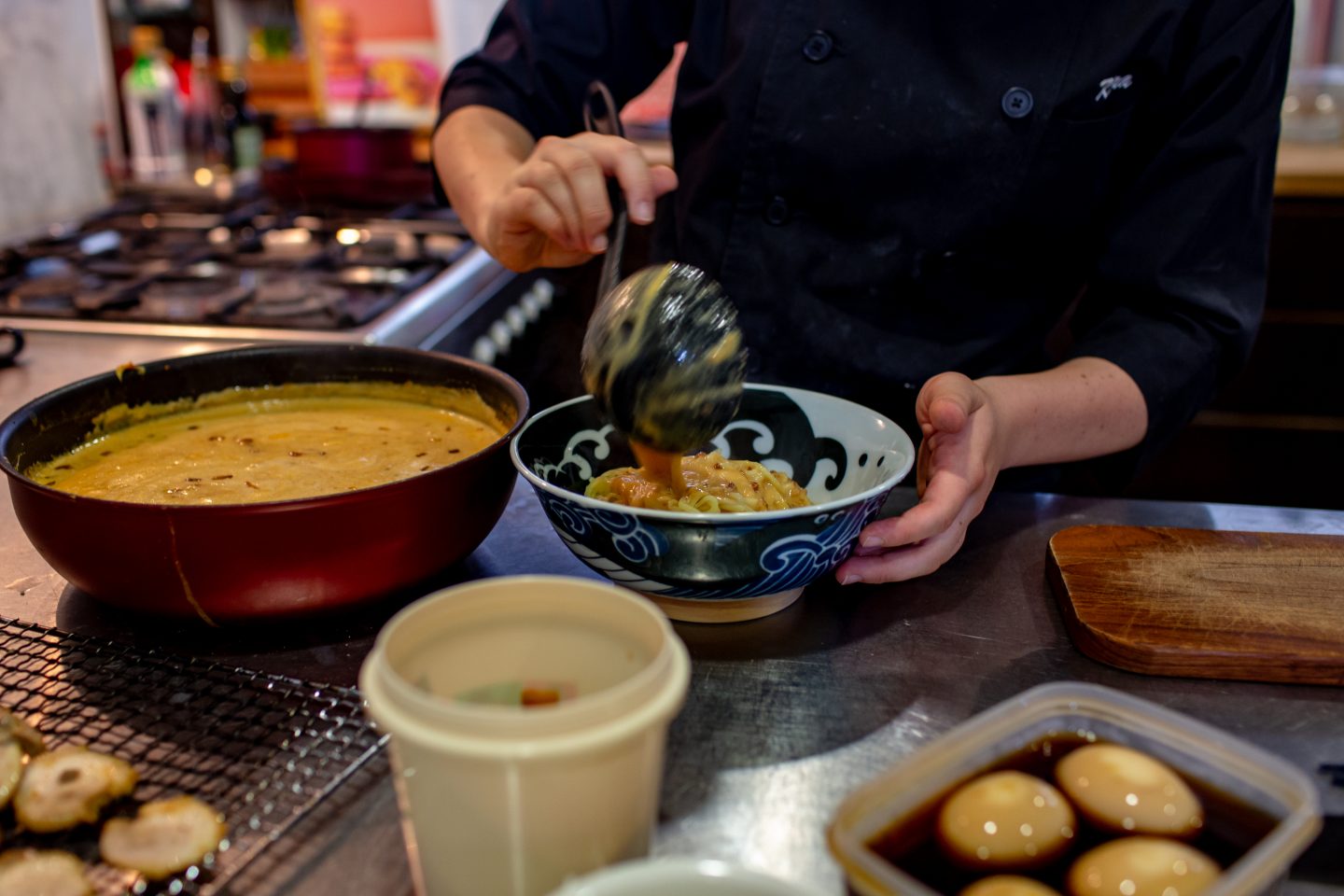
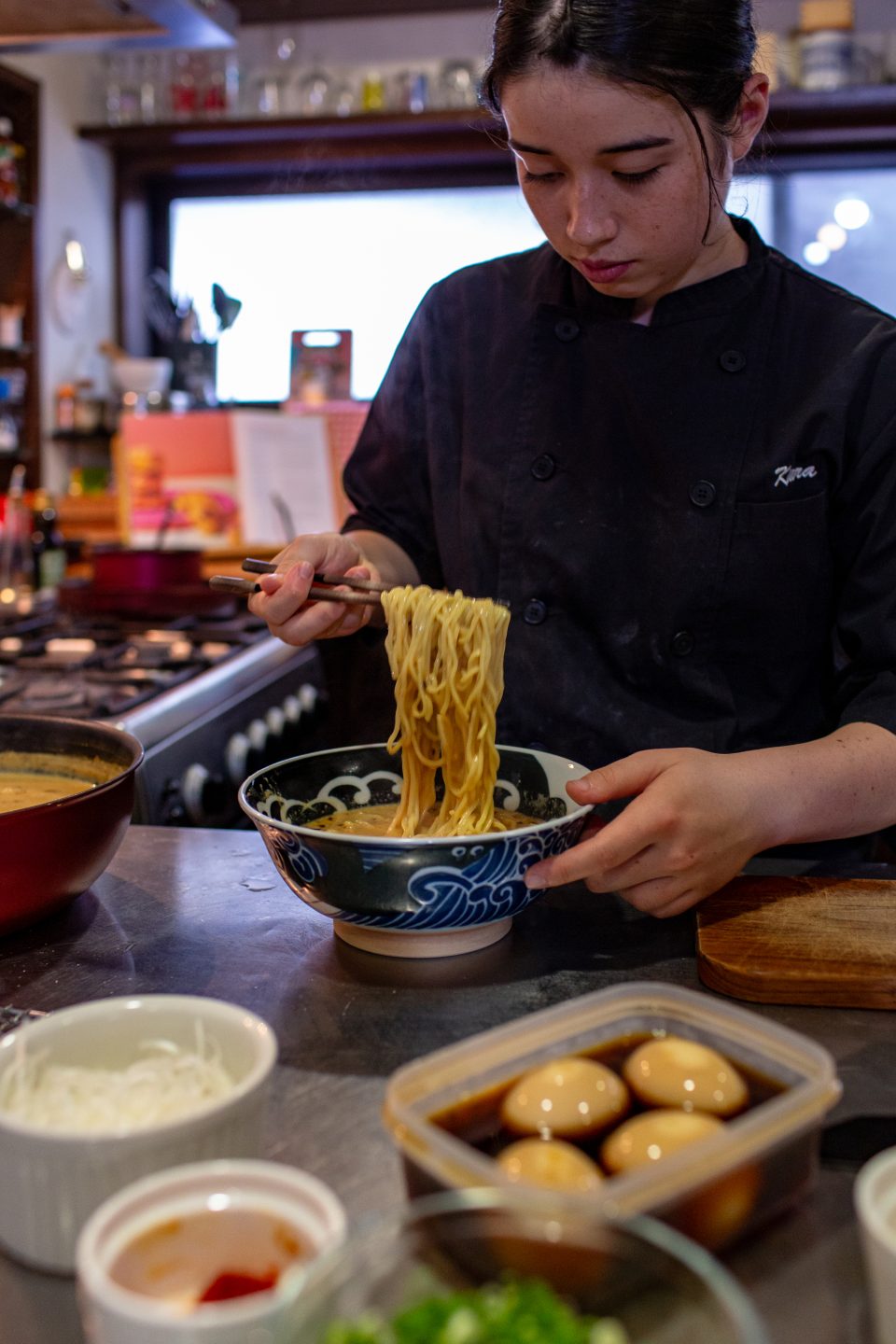
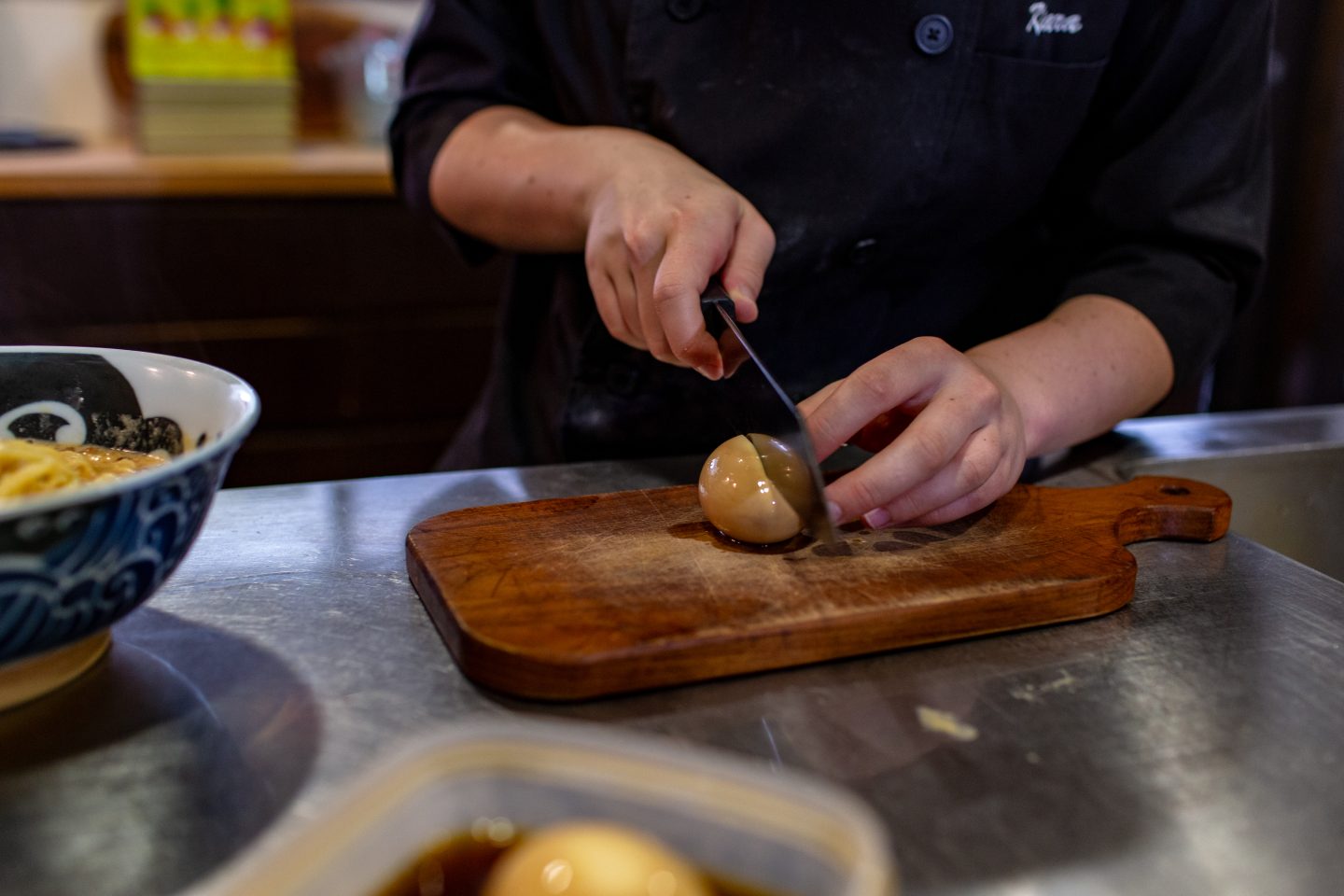
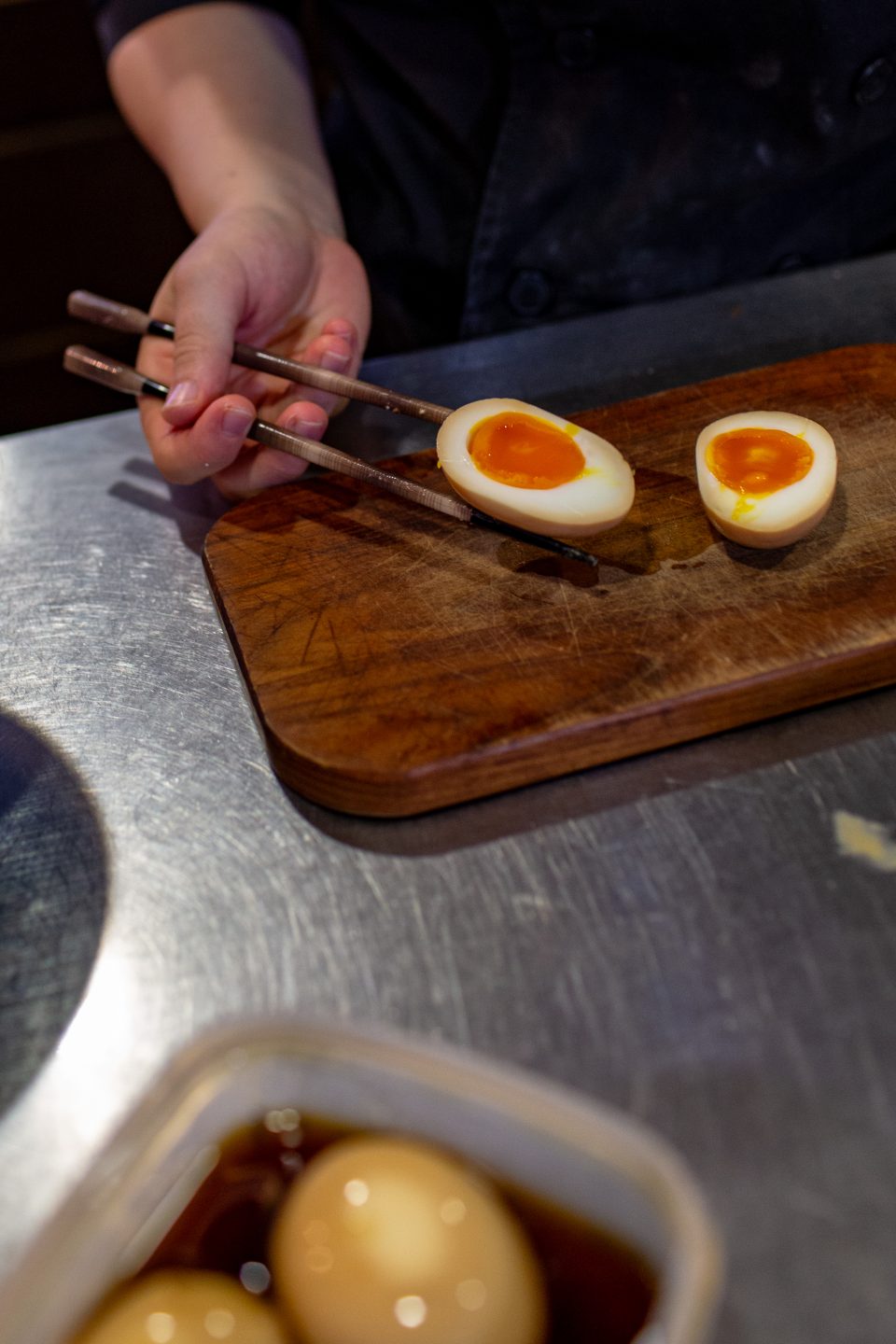
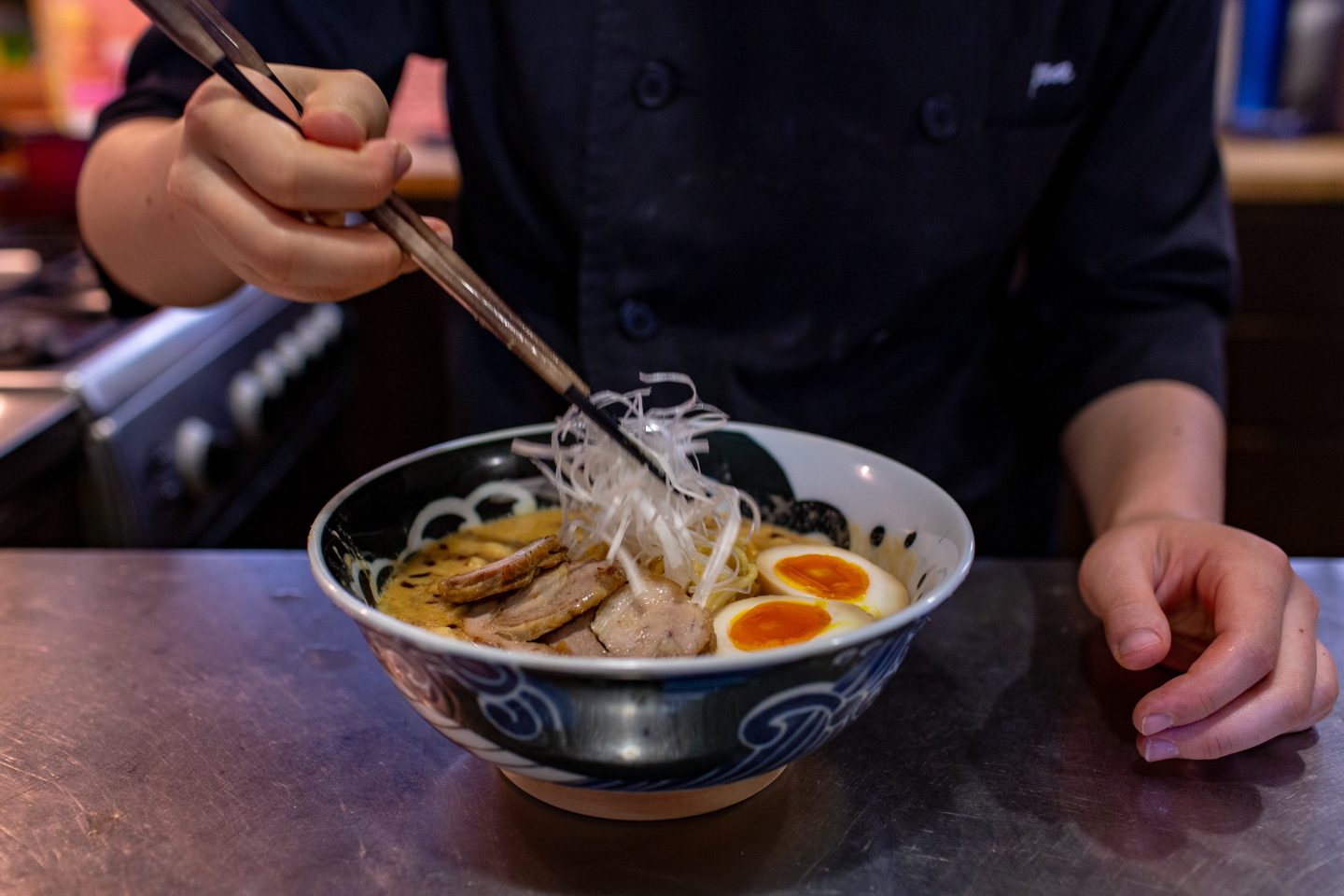
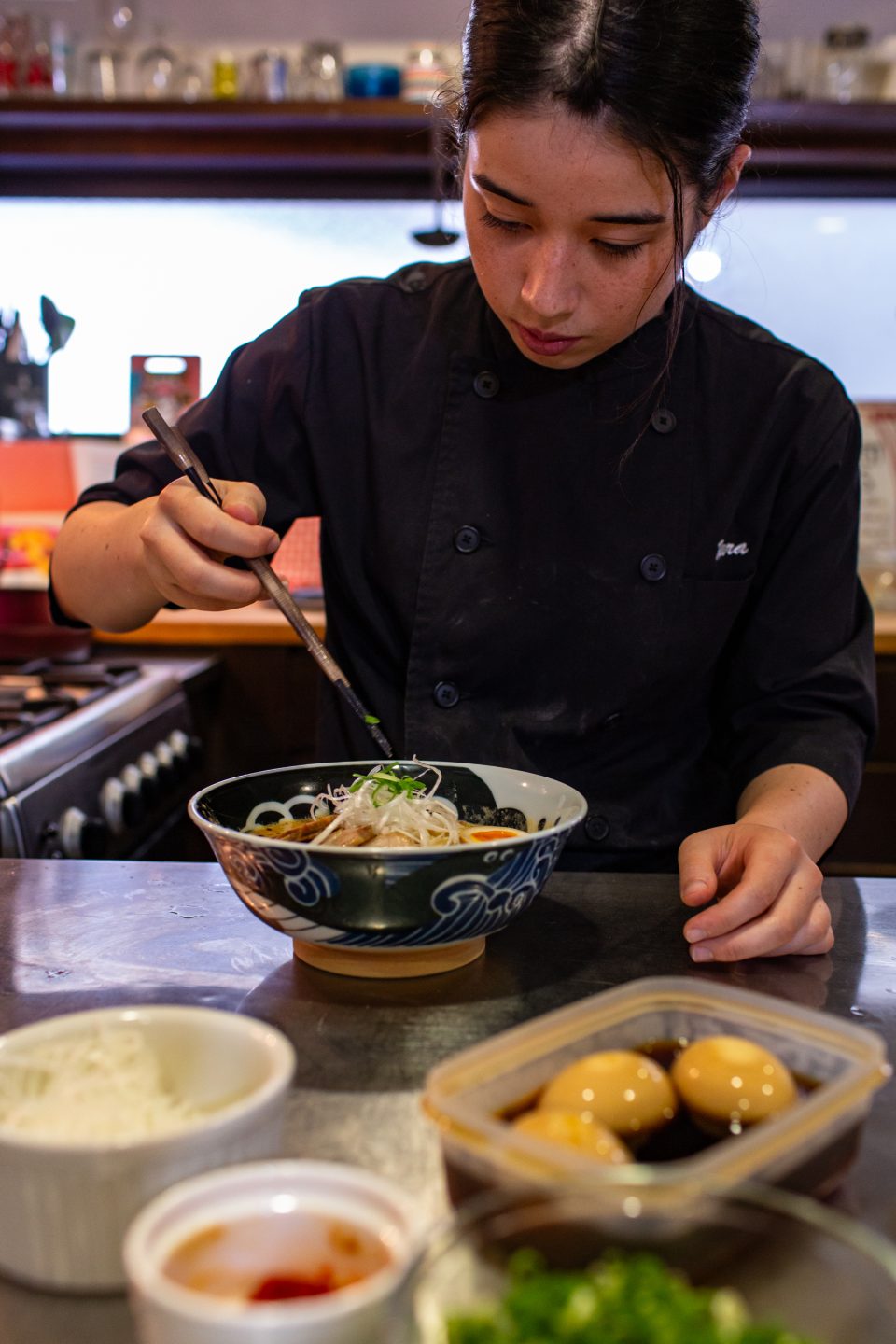
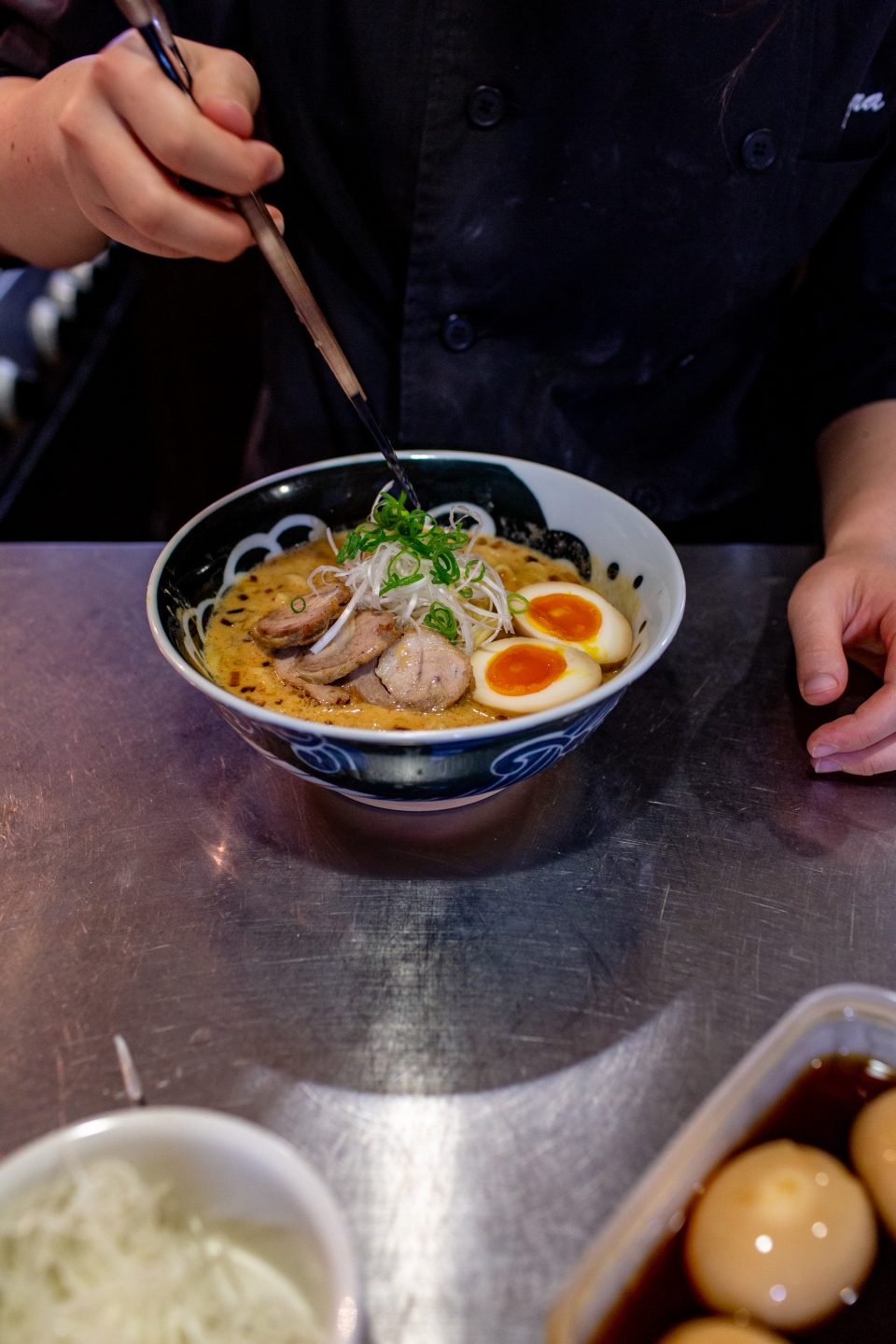
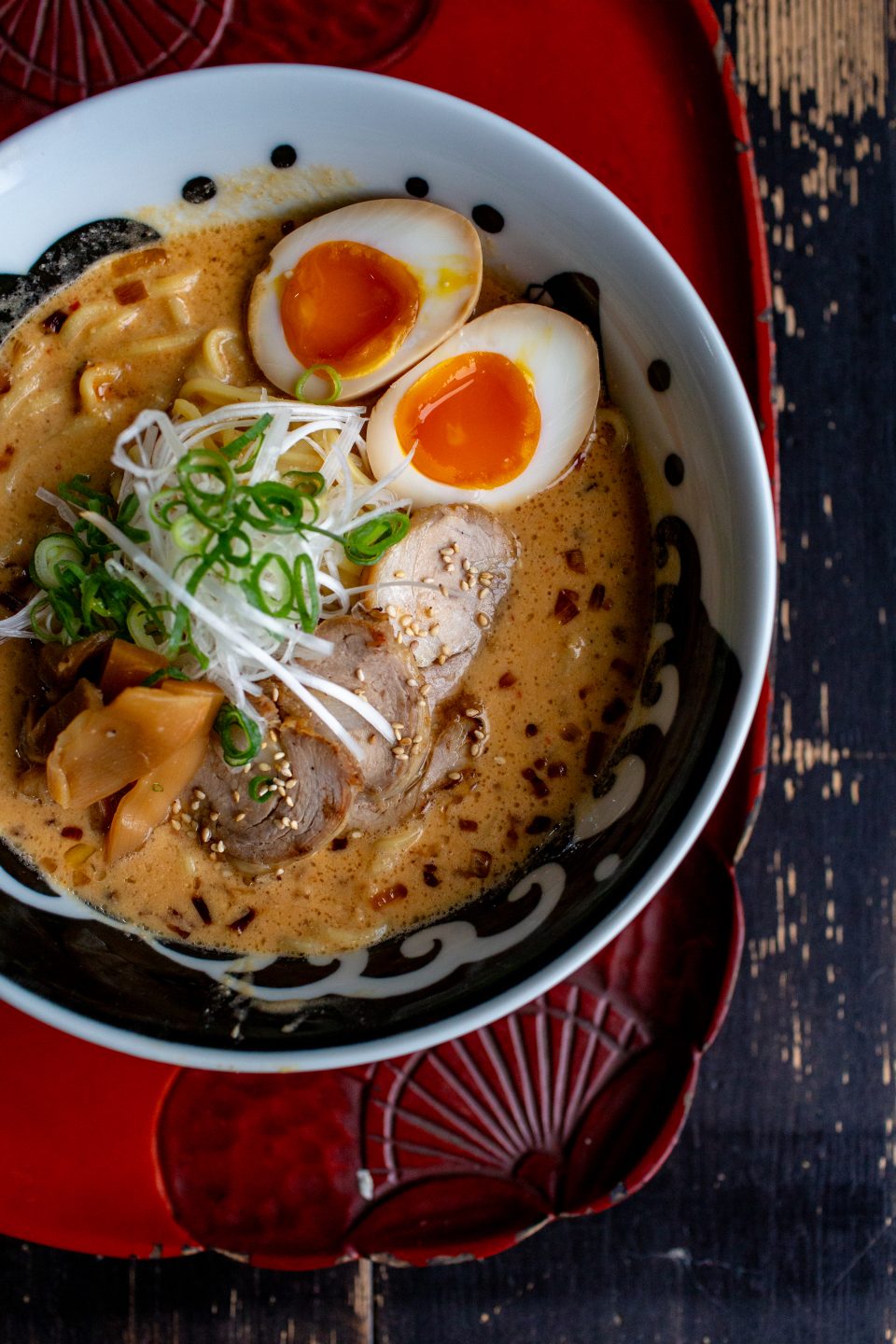
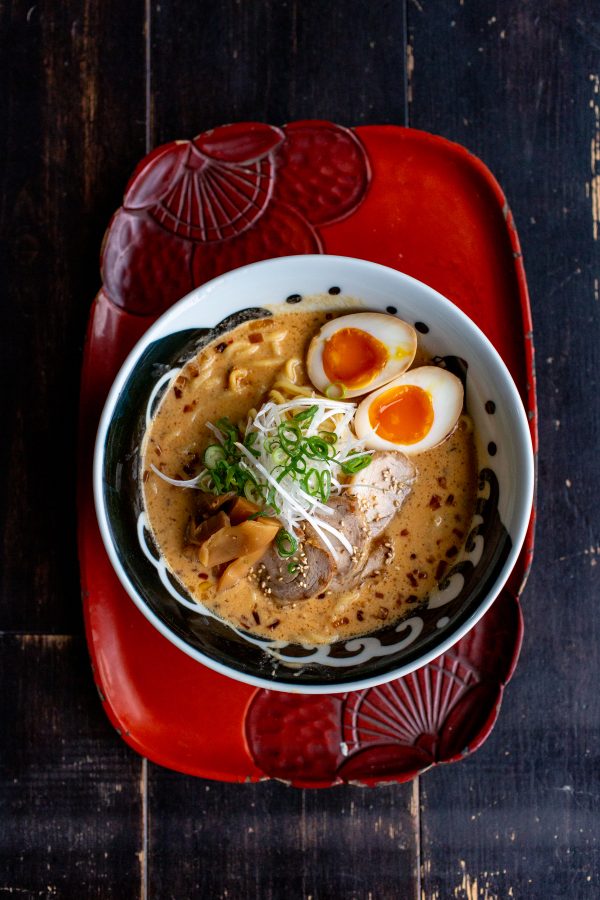
Miso Ramen (w/ Peanut butter and Cashews)
Prep time: | Cook time: | Serves 1
- 1 clove garlic
- 1/4 young leek
- 3 tbs vegetable oil
- The Broth
- 2 tbs red miso paste
- 1 tsp mentsuyu (kombu & bonito base soy sauce)
- 1 tbs chicken stock liquid
- 1 tsp unsalted smooth peanut butter
- 1 tsp tobanjan sauce (chili bean paste)
- 1 tsp sesame oil
- 1 tsp sesame seeds
- a handful of cashew nuts
- 350ml water
- 50 full cream milk
- salt and pepper to taste
- The Toppings
- 3-4 Char Siu (cooked bbq pork) pieces
- 2-3 pieces Menma (fermented bamboo shoots)
- 1 Ajitsuke tamago (ramen egg)
- The Noodle
- 180g of fresh ramen noodle
- In a deep sauté pan, heat the vegetable oil on medium heat, then add minced garlic and finely sliced green part of the leek until fragrant and soft.
- In a food processor, place the broth ingredients and blend until smooth. Pour the mixture into the sauté pan and let it simmer for a few minutes until it boils, then turn off the heat.
- In another pot, boil the fresh ramen noodles as per package instructions. Once cooked, rinse under cold water to loosen them, then drain.
- Julienne the white part of the leek and soak in cold water so they stay crisp and fresh.
- Heat the Char Siu pieces on a grill to add more smoky flavor.
- In a serving bowl, place the cooked ramen noodles, then ladle in a couple of ladlefuls of broth. Top with grilled Char Siu, sliced Ajitsuke tamago, menma, and garnish with the white leek and sesame seeds.
- Serve hot.
